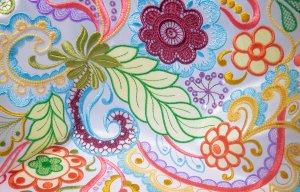
Lässer acquires Saurer embroidery business
Leading textile machinery manufacturer Saurer has a little-known connection to the occasion, which marked the start of a new chapter in space exploration.
16th July 2019
Innovation in Textiles
|
The Moon
© Saurer.
Fifty years ago, people around the globe watched in awe as a human being stepped onto the moon’s surface for the first time. Leading textile machinery manufacturer Saurer has a little-known connection to the occasion, which marked the start of a new chapter in space exploration.
“On 20 July 1969, Neil Armstrong became the first person to set foot on the moon. As the world commemorates the 50th anniversary of this event, we consider the small but significant contribution our company made to this momentous occasion, made possible through the expertise of our customer,” Saurer said in a statement today.
Saurer’s partnership with apparel branding innovator Lion Brothers, based in Owings Mills, Maryland, USA, lasted seven decades. In 1967, the company had become the first to supply the National Aeronautics and Space Administration (NASA) with embroidered mission patches, starting with Apollo 1.
Using Saurer’s 2S-55, the most advanced embroidery machine of the time, Lion Brothers produced the shoulder patch for Apollo 11, the mission that resulted in two astronauts reaching the moon.

© Saurer.
“We are proud to have made a contribution to this pioneering mission. Superb quality has always been a distinguishing feature of our customers’ products,” states Efthimios Katsidis, General Manager Saurer Embroidery.
At the time, punched tape was used to program embroidery machines. An image six times the size of the design, called the cartoon, was produced. The puncher then recorded the X and Y coordinates on the paper tape by punching holes into it. The creation of the cartoon and digitising process were both manual. In the case of the Apollo 11 mission patches, the government contract with Lion Brothers dictated that all cartoons and punched tapes had to be destroyed once production was complete. This means that any such patches produced subsequently are copies.
“As science and technology keep developing, we are eager to see our customers pushing boundaries and using our machines to serve clients in new industries and in unprecedented ways,” says Efthimios Katsidis. “Who knows, perhaps embroideries or technical textiles created on Saurer machines will play a role in the first manned mission to Mars.”

Business intelligence for the fibre, textiles and apparel industries: technologies, innovations, markets, investments, trade policy, sourcing, strategy...
Find out more